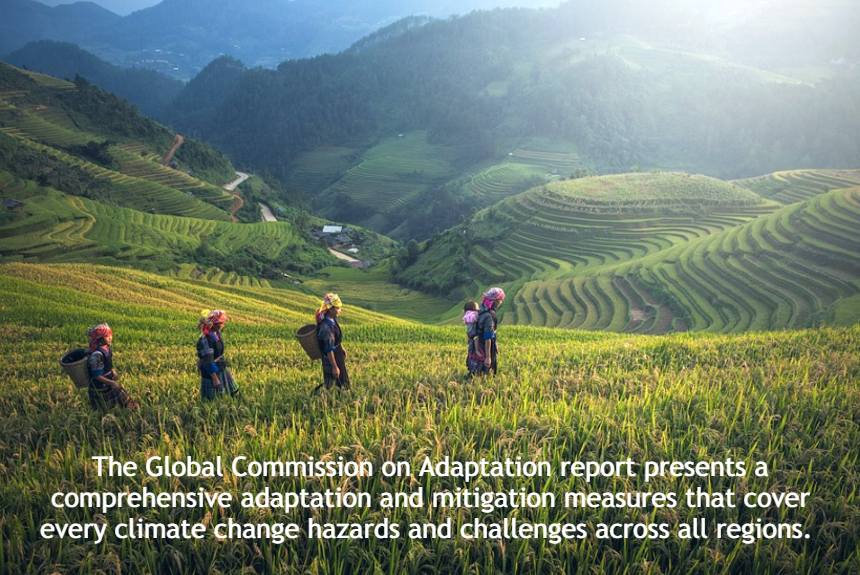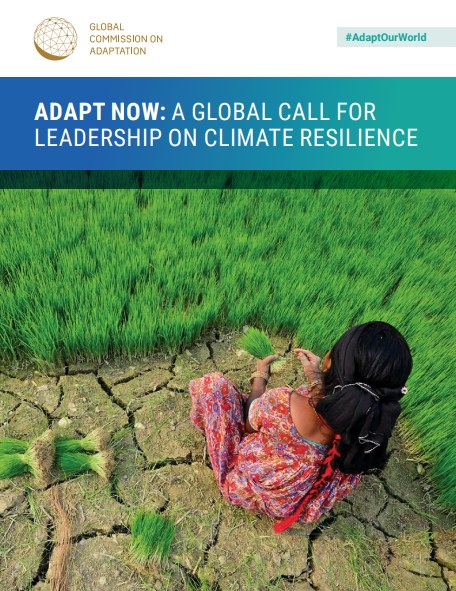Apart from sharing the climate change crisis we are in, the Global Commission on Adaptation report presents that there are excellent dividends for investing in climate change adaptation.
The news we read from the BBC and Stuff New Zealand calls for a global investment of $1.8 trillion in adaptation. This investment could generate $7.1 trillion in benefits. The report claims that benefits-to-cost ratios are very high at 10:1 and, in some studies, much higher.
Bill Gates, the co-chair of the Global Commission on Adaptation, together with Chair and former UN Secretary Ban Ki-Moon, calls for urgent investment and drastic action towards climate adaptation.
The Global Commission on Adaptation is guided by 34 Commissioners, convened by 20 countries, and composed of business people, leaders, politicians, and academes.
Climate change will affect everyone and all regions. The sad reality is that people who did the least to cause the problem, those living in poverty and developing countries, are the most at risk and will suffer the most, the report says.
Although the case of adaptation is clear, the pace of things is not quick enough because climate risks and impacts are not integrated sufficiently into the decision-making processes; thus, a ‘revolution’ is required, according to the report, to wit:
- Revolution in Understanding: A clear understanding of the magnitude and nature of risks involved and how they will affect society and the economy.
- Revolution in Planning: Better policies, investments, and implementation of solutions because climate change is urgent and pervasive. The public and private sectors also need information and topographic data on climate hazards to help them make better decisions in the face of uncertainty.
- Revolution in Finance: A more speedy mobilisation of funds and resources for climate adaptation and resilience-building in infrastructure. And higher and more accessible financial support for adaptation in developing countries.
The report says that investing in adaptation avoids losses and will deliver a triple benefit or yield to society that is both certain and immediate.
Triple dividend from adaptation investments, according to the report:
Avoided losses – establishing early warning, for example, during natural calamities will prevent many losses and damages to lives and infrastructures.
Economic benefits – Reducing flood and other natural risks will protect investments, infrastructure, and land. The construction of the Thame Barrier in London and the Maeslant flood defence in the Netherlands are good examples of this.
Investing in innovative agriculture methods and technology, such as drip irrigation, preserves precious water and promotes its sustainable use to manage water in dry and drought-prone areas better.
Social and environmental benefits – restoration and protection of mangroves along the coastlines can help prevent coastal erosion and flooding while enhancing the ocean ecosystem. The benefits will be ten times the cost of implementation.
The report identifies the key systems that need adaptation acceleration:
Food. The demand for food will increase by 50%, while yields will decline by 30% without climate action. Investments in agriculture and small-scale farming using climate-smart production and technologies will yield 2:1 and 17:1 benefit-to-cost ratios.
Natural Environment. Nature-based solutions that protect shorelines and water sources would complement built infrastructure. Protection and restoration of land is also a suitable mitigation strategy.
Water. Integration of climate risks such as floods and droughts to water infrastructures, investments in watersheds, and the efficiency of water use are some mitigating actions for economic growth and making their water resource resilient, especially in areas with water resource problems like India, Asia, and China.
Cities. Urban areas are homes to half the global population and the epicentre of opportunity and innovation. Metropolitan cities located in coastal areas are vulnerable to climate hazards. Investing in climate risk information and topographic data while investing in nature-based solutions can help them be resilient to heat and water risks. The cost of adaptation compared to no action is very low at 1:10, a great reason to invest in adaptation.
Infrastructure. Planning where and what to build, deciding what assets need upgrades, investing in green infrastructures, and ensuring that infrastructure can still function despite damages are some adaptation actions suggested in the report. Climate-proofing existing infrastructure and building resilience into new infrastructure will give a 4:1 benefit-to-cost ratio.
Disaster risk management. Through the application of preventing, protecting and recovering rules. Use improved warning systems that prepare people, protect their assets and direct them on what to do and where to go during calamities and disasters. Improved health and education services, and application of the build-back better principle for damaged infrastructures.
Adaptation investments in the following:
Early warning systems, resilient infrastructures, improving dryland agriculture and crop production, protection of mangroves, and resilient water resources at $1.8 trillion are minimal. They are less than 1% of the total gross capital between 2020 and 2030. The report says it has a projected $5 to $10 trillion benefit.
The report presents comprehensive climate adaptation and mitigation measures covering every climate change hazard and challenges across all regions.
It looks at required responses from a global to a local perspective, applications of region-specific adaptations, use of green infrastructures, and nature-based solutions to complement grey infrastructure in urban areas.
The report calls for more drastic and speedy investments in adaptations and mitigation measures and discusses the sources of funds and prompt access needed for accelerating adaptation.
Read the full report by clicking on the image below:



